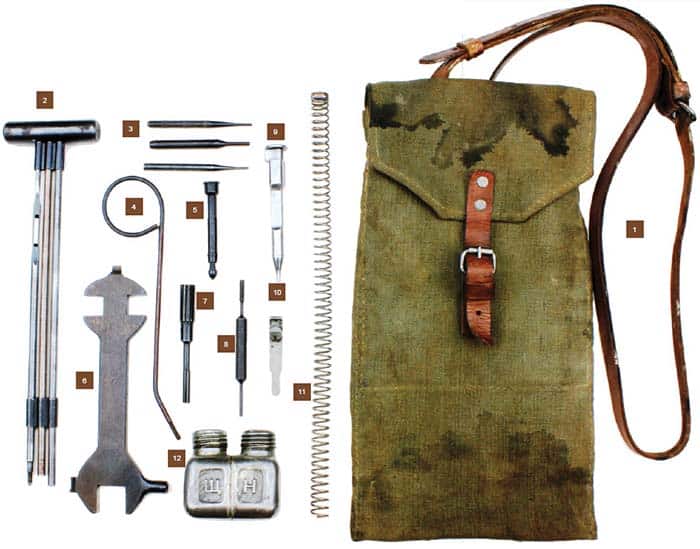By Robert G. Segel
Designed by Vasily Degtyaryov in 1927, the Russian DP28 was the primary light machine gun of the Red Army during World War II. Man portable with a distinctive 47-round pan magazine, the DP28 was produced in the hundreds of thousands of units and proved itself throughout its service life as a reliable and rugged weapon.
Whether from wear, breakage or battle damage, DP28 gunners carried a gunner’s kit with them to keep the weapon in operating condition. The gas-operated weapon was very simple in construction and the gunner’s kit reflected the simplicity of the gun.
The kit consists of a simple canvas bag with an adjustable leather shoulder strap. The top flap is secured by a metal roller buckle and leather strap. A single pocket is stitched to the rear inside of the bag to hold the three-piece cleaning rod assembly that also gives the bag form and rigidity. Contents of the bag consist of:

1. Canvas bag with adjustable leather shoulder strap
2. Three-piece cleaning rod assembly
3. Three assorted pin punches
4. Chamber rod
5. Ruptured case extractor
6. Combination tool/wrench
7. Double ended carbon scraper (large)
8. Double ended carbon scraper (small)
9. Spare striker (firing pin)
10. Spare extractor
11. Driving spring
12. Combined solvent and oil bottle. (The “W” is actually the Cyrillic “ShCh” and the word transliterates to “shchelo,” which means lye or alkaline solution/solvent. The “H” is the Cyrillic “N” that transliterates to “neft” or oil.)
| This article first appeared in Small Arms Review V20N1 (January 2016) |












